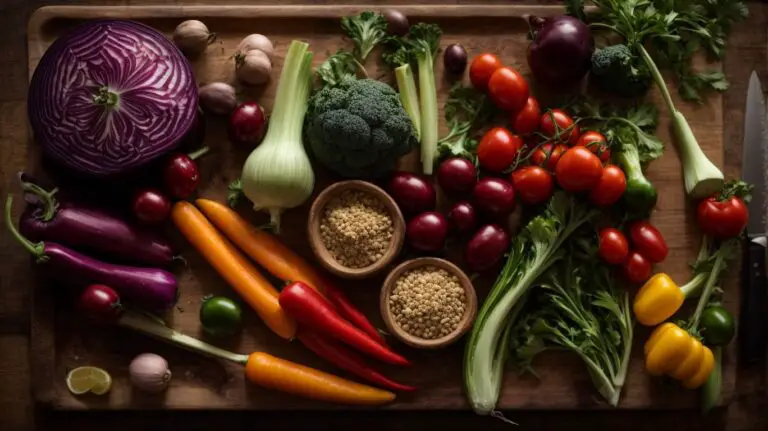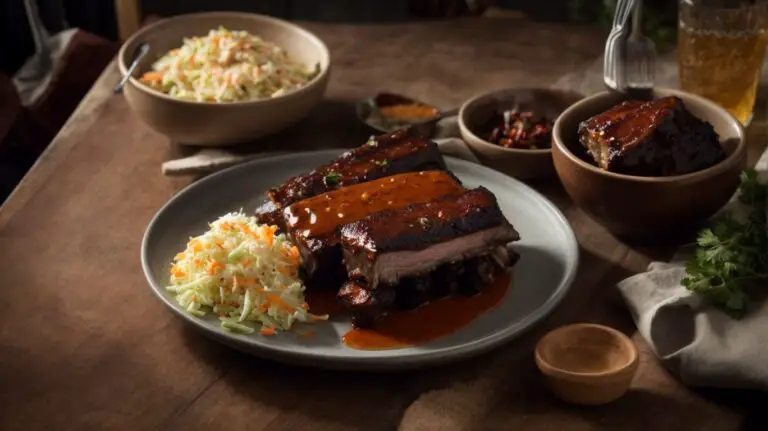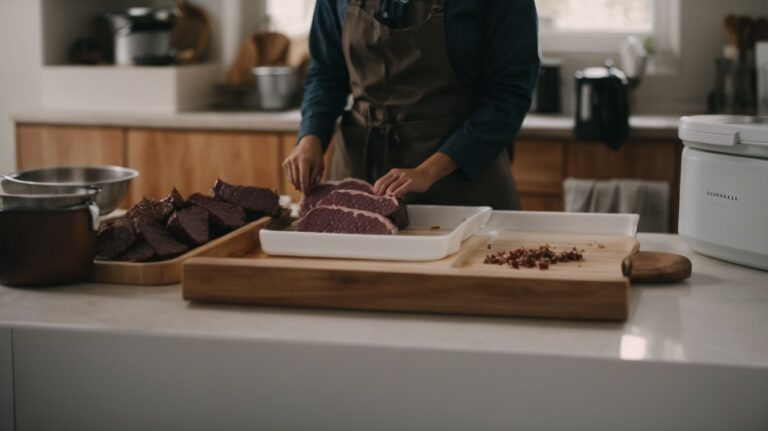How to Cook Green Beans After Blanching?
Looking to elevate your green bean game in the kitchen?
Blanching is the secret technique you need to know about. We explore what blanching is and why it is important for cooking green beans. We also provide a step-by-step guide on how to blanch green beans perfectly and share three delicious cooking methods to try after blanching your green beans.
Get ready to impress your taste buds with perfectly cooked green beans!
Key Takeaways:
What is Blanching and Why is it Important?
Blanching is a cooking technique that involves briefly immersing green beans in boiling water, then rapidly chilling them in ice water. It is essential for preserving the vibrant color and crisp-tender texture of green beans before incorporating them into various dishes.
Blanching, as a preliminary cooking method, serves as a crucial step in the culinary world. By subjecting the green beans to a quick hot-cold treatment, blanching halts the enzyme actions that could lead to color and nutrient loss over time. This process not only locks in the natural green hue of the beans but also helps maintain their firmness and bite. The quick blanching stint softens the beans slightly without making them mushy, making them ideal for subsequent cooking methods like stir-frying or sautéing.
Through blanching, excess dirt, surface microbes, and any unwanted residues are washed away, ensuring that the beans are clean and safe for consumption. Blanching green beans helps to reduce bitterness, if present, resulting in a more balanced flavor profile. The blanched beans can be stored in the refrigerator or frozen for later use. This technique not only enhances the visual appeal of green beans dishes but also contributes to their overall taste and nutritional value.
How to Blanch Green Beans?
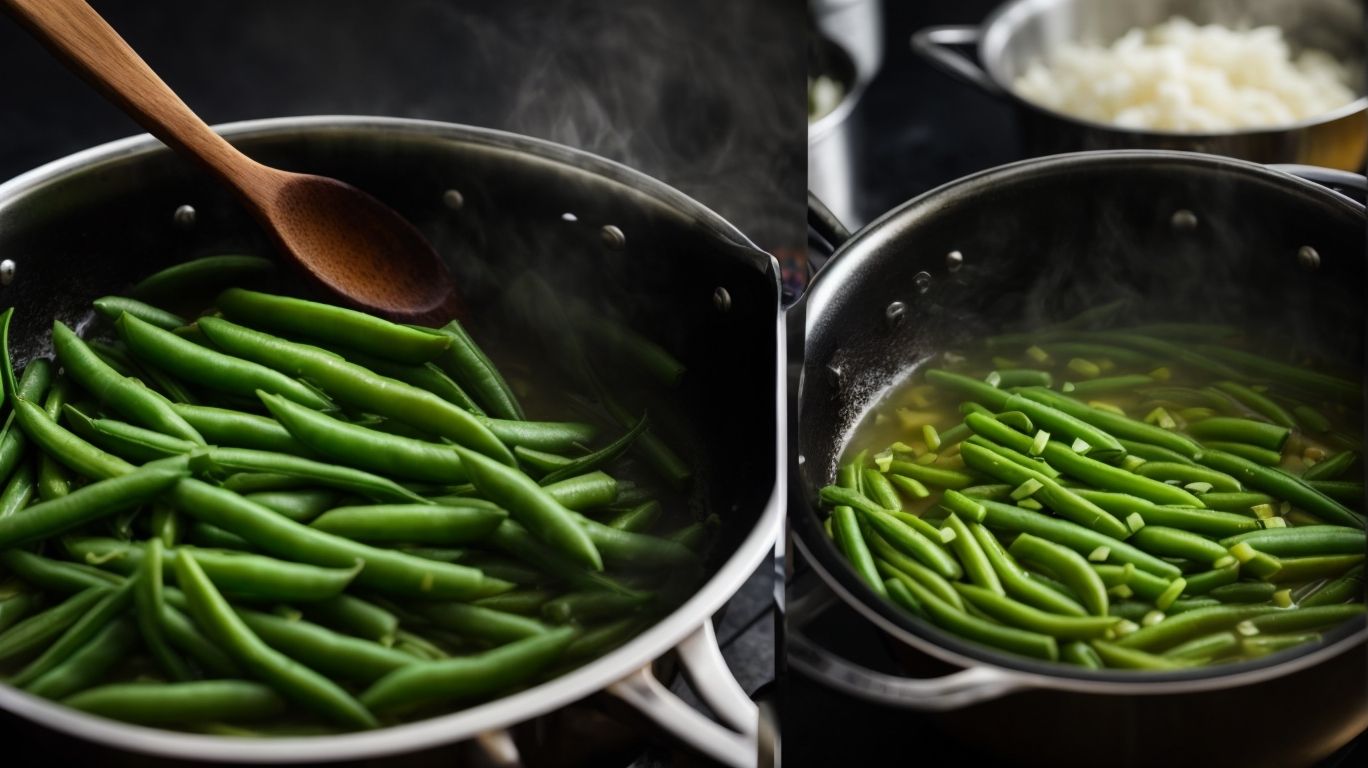
Credits: Poormet.Com – Philip Sanchez
To blanch green beans, begin by trimming the ends and preparing a pot of salted boiling water. Submerge the green beans in the boiling water for a short time, then transfer them to ice water to halt the cooking process, resulting in vibrant and tender-crisp green beans.
Blanching green beans is a quick and easy method to enhance their color, flavor, and texture. The process of blanching involves briefly cooking the beans in boiling water followed by rapid cooling. This technique not only helps retain the beans’ nutrients but also gives them that beautiful green hue we all love.
By blanching the green beans, you preserve their crunchiness and prevent them from turning limp or losing their vibrant appearance. The blanching process also cleanses the beans and removes any dirt or impurities, ensuring that your dish is not only visually appealing but also safe to consume.
Step 1: Prepare the Green Beans
Before blanching green beans, ensure they are fresh by selecting firm and vibrant beans. Trim the ends and remove any blemishes to prepare them for the blanching process.
Once you have selected the best green beans, it’s time to start the trimming process. Lay the beans on a cutting board and using a sharp knife, snip off the stem end. This step helps in removing any tough or stringy parts of the bean. Next, you can also trim the other end if necessary.
After trimming, it’s essential to wash the beans thoroughly under cold running water to remove any dirt or residue. Once cleaned, pat them dry with a clean kitchen towel before moving on to the next steps.
Step 2: Bring Water to a Boil
In the next step of blanching green beans, bring a pot of salted water to a rolling boil, ensuring there is enough water to fully submerge the beans for the blanching process.
Adding salt to the water not only enhances the flavor of the green beans but also helps to preserve their vibrant color and texture during the blanching process. The ideal temperature for blanching water is around 190-212 degrees Fahrenheit (88-100 degrees Celsius), as this temperature range ensures that the beans cook quickly and evenly without becoming overcooked. It is crucial to maintain a consistent rolling boil to achieve the desired blanching effect, allowing the beans to soften slightly while retaining their crispness.
Step 3: Blanch the Green Beans
Submerge the prepared green beans in the boiling water and allow them to cook for a brief period to achieve the desired vibrant color and crisp-tender texture during the blanching process.
Blanching is a crucial step in the cooking journey of green beans as it helps preserve their color, texture, and nutrients. The ideal blanching duration for green beans is typically around 2-3 minutes, depending on their size and freshness.
Visual cues play a significant role in determining the completion of blanching. You will notice the beans turning a brighter shade of green and becoming slightly softened. Remember not to overcook them as this could result in a loss of flavor and nutrients.
Step 4: Cool the Green Beans
Immediately transfer the blanched green beans to a bowl of ice water to rapidly cool them and halt the cooking process, preserving their vibrant color and ensuring a crisp-tender texture for further use.
Plunging the green beans into ice water is a crucial step in the blanching process. The shock of the cold water stops the cooking immediately, preventing them from turning mushy and overcooked. This method not only locks in the color and texture but also helps to maintain the beans’ nutritional value.
An important tip is to use a large bowl filled with plenty of ice cubes and water to ensure a quick and effective cooling process. Let the green beans sit in the ice water bath for about 2-3 minutes until they are completely chilled.
How to Cook Green Beans After Blanching?
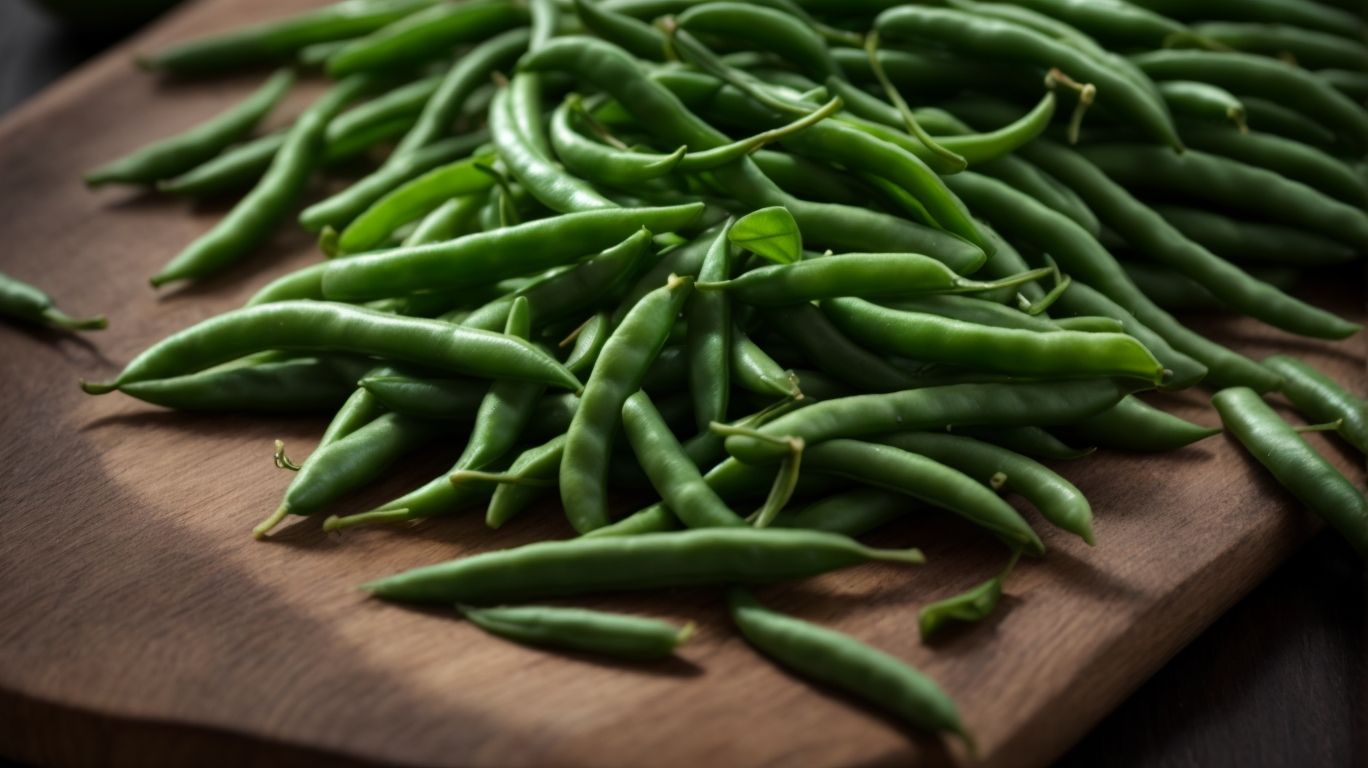
Credits: Poormet.Com – Eric Brown
Once green beans are blanched, they can be cooked using various methods such as sautéing, roasting, or steaming to enhance their flavor and texture while retaining their vibrant appearance.
Sautéing green beans involves quickly cooking them in a hot pan with oil or butter, creating a crispy exterior while maintaining a tender interior.
Roasting green beans in the oven adds a flavorful caramelization to the beans, giving them a delicious nutty taste and a slightly crisp texture.
Steaming green beans is a gentle cooking method that helps preserve their nutrients and natural color, resulting in a tender and slightly crisp texture.
Method 1: Sautéed Green Beans
For sautéed green beans, heat oil in a pan, add minced garlic and blanched green beans, then sauté until tender-crisp. Finish with a splash of lemon juice for a vibrant flavor.
Once you’ve heated the oil in the pan, the minced garlic adds a fragrant base before introducing the blanched green beans, which retain their vibrant color. Sautéing them together allows the flavors to meld, creating a delicious side dish or addition to a meal.
To enhance the taste, add a splash of lemon juice just before finishing the sauté – it brings a refreshing zest that complements the garlic and green beans perfectly.
Method 2: Roasted Green Beans
To roast green beans, toss them with oil, minced garlic, and Parmesan cheese, then spread on a baking sheet and roast until golden and crisp for a delightful side dish.
Preheat the oven to 425°F (220°C) and line a baking sheet with parchment paper for easy cleaning. Once the green beans are coated in the flavorful mixture, arrange them in a single layer on the prepared baking sheet. For additional seasoning, consider adding a sprinkle of smoked paprika or a drizzle of balsamic vinegar before roasting.
Method 3: Steamed Green Beans
Steamed green beans are a simple yet flavorful option. Steam the blanched green beans until tender, then garnish with lemon zest and fresh herbs for a vibrant and aromatic side dish.
To achieve the perfect tenderness when steaming green beans, it is essential to cover the pot with a lid to trap the steam, ensuring even cooking. Timing is crucial here; typically, green beans should be steamed for about 5-7 minutes, depending on their thickness. This method helps retain the beans’ vibrant color and crisp texture. For seasoning, you can experiment with a variety of fresh herbs such as parsley, thyme, or dill to elevate the flavor profile. Lemon zest adds a refreshing citrus note that complements the earthy taste of the beans.
Tips for Cooking Green Beans After Blanching
Enhance your green bean dishes with these helpful tips: always use fresh green beans for optimal flavor and texture, avoid overcooking to maintain crispness, and season with your favorite herbs and spices for added taste.
After blanching your fresh green beans, plunge them into an ice water bath to stop the cooking process and lock in their vibrant color.
To prevent overcooking, keep an eye on the beans as they simmer; they should be tender-crisp, not mushy.
A sprinkle of lemon zest or a drizzle of olive oil can elevate the flavors of your green beans without overpowering them.
Tip 1: Use Fresh Green Beans
Selecting fresh green beans is crucial for ensuring a flavorful and vibrant dish. Look for beans that are firm, with bright color and no signs of wilting or blemishes.
When you choose high-quality green beans, you’re not just ensuring a better taste; you’re also maximizing their nutrient content. To make sure you’re getting the best beans, opt for ones that snap easily when bent, indicating freshness. Avoid beans that feel limp or have visible brown spots. Trimming the ends of the beans is important to remove any tough or woody parts, ensuring a pleasant texture in your dishes.
Tip 2: Do Not Overcook
Avoid overcooking green beans to maintain their desired crisp-tender texture. Set a timer and check for doneness during cooking to ensure the beans remain vibrant and flavorful.
Green beans are at their best when they are cooked just right, allowing their natural flavors to shine through. Overcooking can lead to a mushy texture, which is far from desirable. To achieve that perfect balance of crispness and tenderness, keep a watchful eye on the beans as they cook, periodically testing their doneness. When checking for doneness, look for a vibrant green color and a slight snap when you bend the bean.
Pay close attention to the cooking time to prevent overdoing them. Green beans typically cook quickly, ranging from 3 to 5 minutes for blanching and 7 to 10 minutes for sautéing. It’s crucial to avoid leaving them unattended on the stove to prevent them from becoming overcooked and losing their appealing crunch.
Tip 3: Season to Taste
Elevate the flavor of green beans by seasoning them with herbs, a squeeze of lemon juice, and a sprinkle of salt to taste. Experiment with different seasoning combinations for variety.
In terms of enhancing the taste of green beans, seasoning plays a crucial role in bringing out their natural flavors. The herbs add a fragrant and aromatic touch, while the citrus element provides a zesty pop that can brighten up the dish. Salt, on the other hand, acts as a flavor enhancer that balances out the overall taste based on your preference. Pairing different herbs like rosemary, thyme, or parsley with a hint of lemon or orange juice can create a harmonious blend that elevates the humble green beans to a gourmet level.
Conclusion
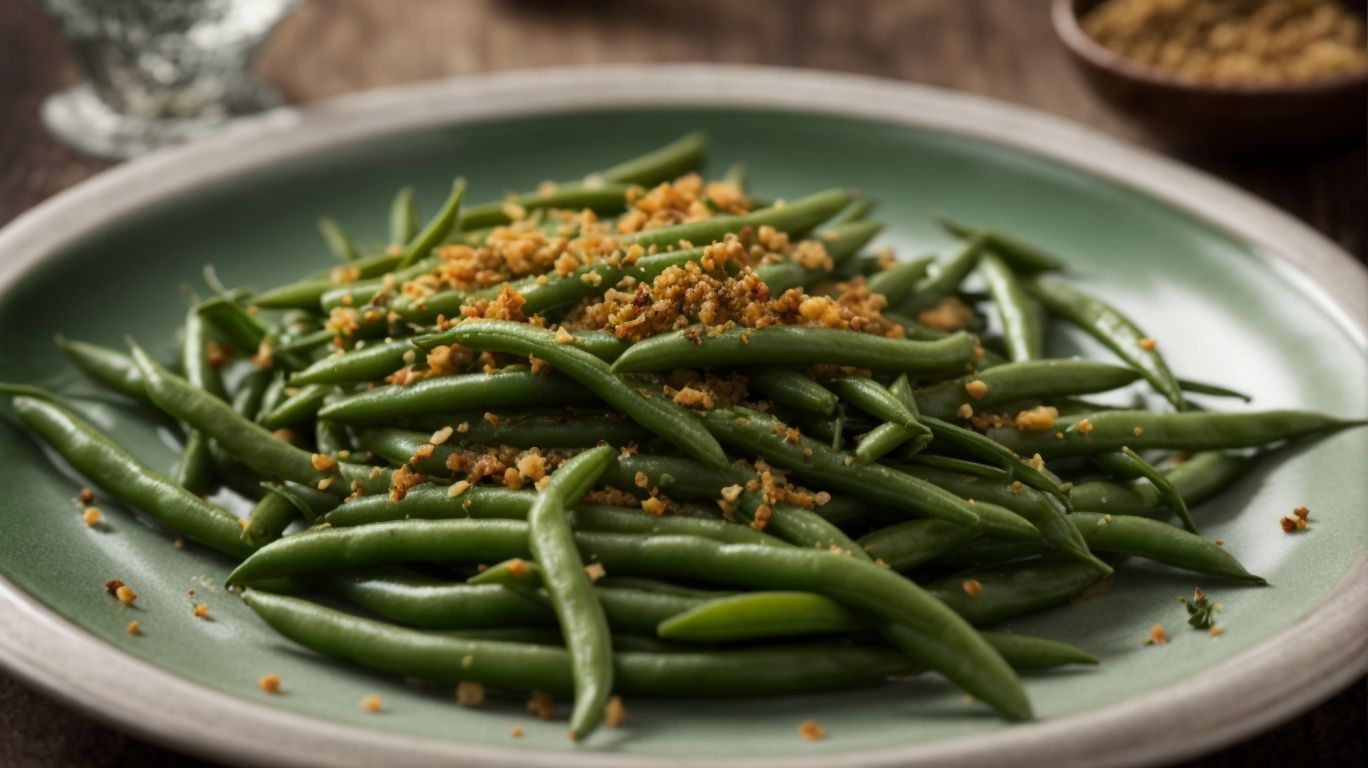
Credits: Poormet.Com – Wayne Hernandez
Mastering the art of blanching and cooking green beans opens up a world of culinary possibilities. With the right techniques and tips, you can create vibrant, flavorful green bean dishes that are perfect for any occasion.
Blanching green beans involves boiling them briefly, then quickly submerging them in ice water to halt the cooking process. This method retains the beans’ bright green color and crisp texture.
Once blanched, green beans can be sautéed with garlic and lemon for a simple side dish, added to salads for a crunchy element, or mixed with tomatoes and herbs for a refreshing summer salad. Experiment with different seasonings such as garlic, thyme, or red pepper flakes to elevate the flavor profile of your green bean creations.
Frequently Asked Questions
How to Cook Green Beans After Blanching?
1. What is blanching and why is it important before cooking green beans?
Blanching is a cooking technique that involves briefly submerging food in boiling water, followed by immediate cooling in ice water. It is important for green beans because it helps to soften their tough skin and preserves their vibrant color.
2. How do I blanch green beans?
To blanch green beans, bring a pot of water to a rolling boil and add the beans. Let them cook for about 2-3 minutes, then immediately transfer them to a bowl of ice water to stop the cooking process.
3. Can I skip blanching and just cook green beans directly?
While it is possible to cook green beans without blanching, they will not have the same texture and color as blanched beans. Blanching ensures that the beans are evenly cooked and retain their bright green color.
4. What is the best way to cook green beans after blanching?
After blanching, you can sauté, roast, or stir-fry the green beans. You can also add them to soups or stews. The key is to cook them quickly over high heat to maintain their crunchiness and vibrant color.
5. How long should I cook green beans after blanching them?
The cooking time will depend on the method you choose. For sautéing or stir-frying, cook the beans for 2-3 minutes. Roasting them in the oven will take about 10-12 minutes. However, if you’re adding them to a soup or stew, they will continue to cook with the rest of the ingredients.
6. Can I freeze green beans after blanching?
Yes, blanched green beans freeze very well. After blanching, pat them dry and place them in an airtight container or freezer bag. They will last for up to 6 months in the freezer. When ready to use, simply cook them for a few minutes in boiling water or add them directly to a dish.



